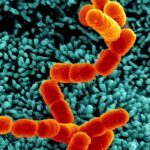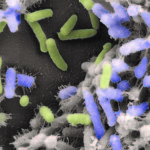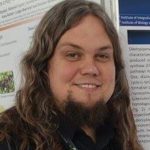Lien vers Pubmed [PMID] – 35246664
Lien vers HAL – pasteur-03685530
Lien DOI – 10.1038/s41564-022-01066-3
Nat Microbiol 2022 Mar; 7(3): 411-422
Recent data support the hypothesis that Gram-positive bacteria (monoderms) arose from Gram-negative ones (diderms) through loss of the outer membrane (OM), but how this happened remains unknown. As tethering of the OM is essential for cell envelope stability in diderm bacteria, its destabilization may have been involved in this transition. In the present study, we present an in-depth analysis of the four known main OM-tethering systems across the Tree of Bacteria (ToB). We show that the presence of such systems follows the ToB with a bimodal distribution matching the deepest phylogenetic divergence between Terrabacteria and Gracilicutes. Whereas the lipoprotein peptidoglycan-associated lipoprotein (Pal) is restricted to the Gracilicutes, along with a more sporadic occurrence of OmpA, and Braun’s lipoprotein is present only in a subclade of Gammaproteobacteria, diderm Terrabacteria display, as the main system, the OmpM protein. We propose an evolutionary scenario whereby OmpM represents a simple, ancestral OM-tethering system that was later replaced by one based on Pal after the emergence of the Lol machinery to deliver lipoproteins to the OM, with OmpA as a possible transition state. We speculate that the existence of only one main OM-tethering system in the Terrabacteria would have allowed the multiple OM losses specifically inferred in this clade through OmpM perturbation, and we provide experimental support for this hypothesis by inactivating all four ompM gene copies in the genetically tractable diderm Firmicute Veillonella parvula. High-resolution imaging and tomogram reconstructions reveal a non-lethal phenotype in which vast portions of the OM detach from the cells, forming huge vesicles with an inflated periplasm shared by multiple dividing cells. Together, our results highlight an ancient shift of OM-tethering systems in bacterial evolution and suggest a mechanism for OM loss and the multiple emergences of the monoderm phenotype from diderm ancestors.









